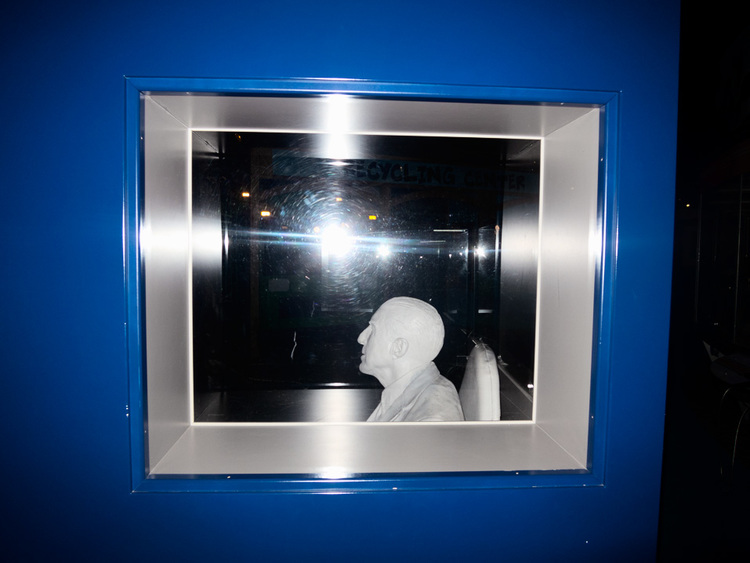If a patron of the Teepee Motel in Wharton, Texas looks out from their room and across the county highway that passes through town, they will first notice a boxy, unassuming metal building, just the type David Byrne once described as the unnoticed realization of “the dream that modern architects had at the beginning of [the 20th] century.” Bolted to the beige façade, in large black letters, is the word museum. Venturing inside, curious tourists will realize that they have found the 20th Century Technology Museum, a wunderkammer chronology of a hundred years in engineering and commerce. Radios, early cellular phones, and boxy computers abound, but two of the main attractions—in one instance literally serving as the sign for the museum—are homemade airplanes. Both look kind of funky—a little beat up, with parts not quite like what one would hope from an aircraft—and indeed, a quick check of the didactics will inform the patron that each of these planes failed to ever take flight. Presented as a “tribute to the ingenuity of great 20th century men,” the planes are suspended above the viewer’s head, fixed by wires and poles into the gradual ascent they never achieved. One is piloted, incidentally, by a plush Snoopy.

Museums are like photographs, or maybe it is vice-versa. Each can be an adventure in verisimilitude and each has a tendency to tousle our relationship with some sort of history. I began photographing inside museums because I got lost.
I moved to Austin in the late summer of 2014 and soon found it difficult to make pictures there. The city has a particular way of presenting itself—there is something in a self-conscious attempt at “keeping weird” that casts an unwanted veneer upon the pictures, pictures that should be weird on their own merit, damn it! And even though I had moved from Phoenix, I found Austin hot to be an exotic and terrible type of hot. Stymied, I decided that I would find activities to occupy myself while I chipped away at the problem of photographing this new place. An artist I’d heard of was giving a lecture at the Amon Carter Museum in Fort Worth, three hours away.
The Amon Carter is not on Amon Carter Boulevard. It’s about a half hour away from there. Had I known, I would have made it to the lecture on time. Not knowing, I got lost at something not quite an airport. Getting lost, I found a museum dedicated to the history of one of the nation’s largest airlines. I keep forgetting the name.
I was giddy. I won’t describe the place because it would deaden what I did there, which was photograph my battery to death and leave euphoric. I finally did make it to the Amon Carter Museum, but I didn’t really care. I ate Thai food and drove home.
After that I started photographing inside as many museums as I could find without aiming to make a body of work about them. They were almost-spaces, a step removed from the “actual world” and built of static objects which, when filtered through the split-second exposure of the photograph, achieved a second, twice-removed state of stillness.
Really I was just doing as a museumgoer does; when I visited an armed forces museum in Austin, the smiling attendant informed me that I wasn’t allowed to touch but that I could “take as many pictures as I liked.” I obliged. But in photographing for the photograph as opposed to the photographed I stepped outside my tourist guise and into an ideal—covert—position as a collector of raw metaphorical data.
Suddenly pictures were everywhere. I discovered the imaginary landscape in my pictures—museum or not—the city that exits only in photographs and expands its borders the more I work. The museums had become a clinic for seeing, even though I was seeing them “wrong.” There was so much work to do.
- Guest Post, Bucky Miller: A Clinic for Seeing - May 23, 2015